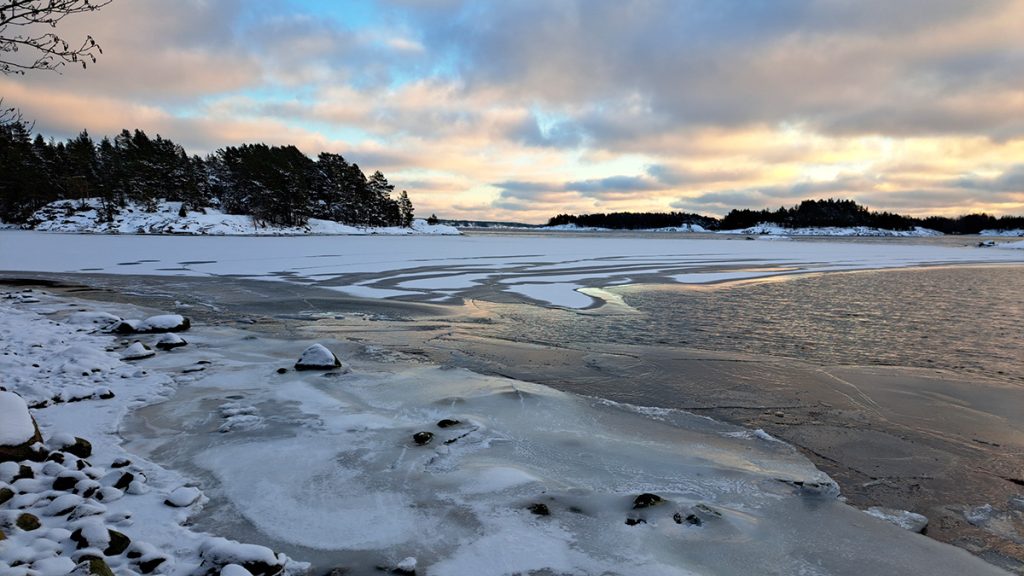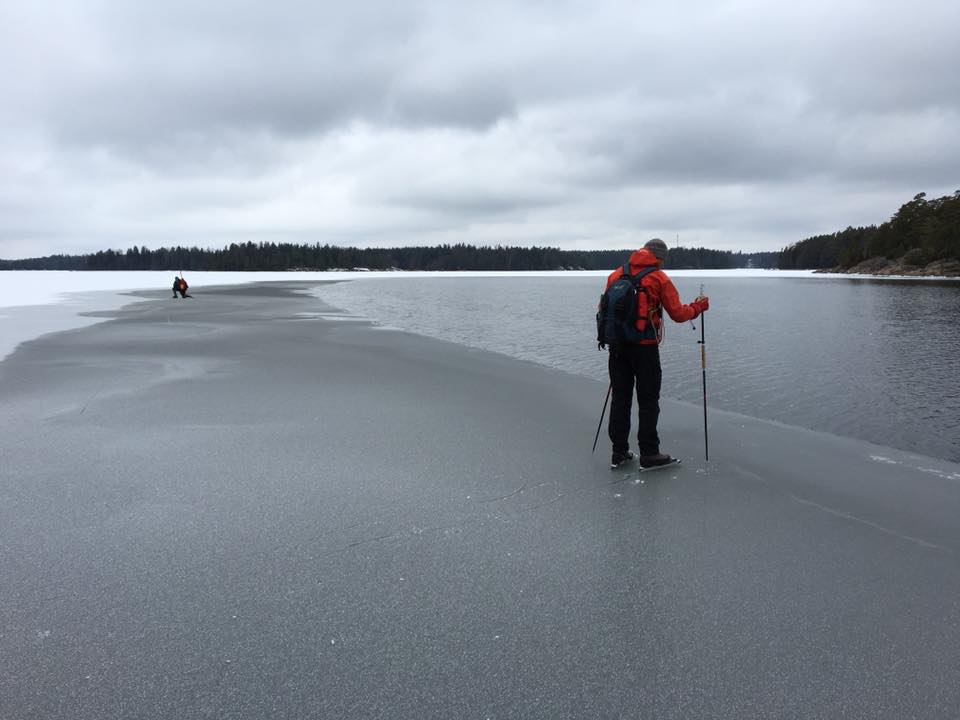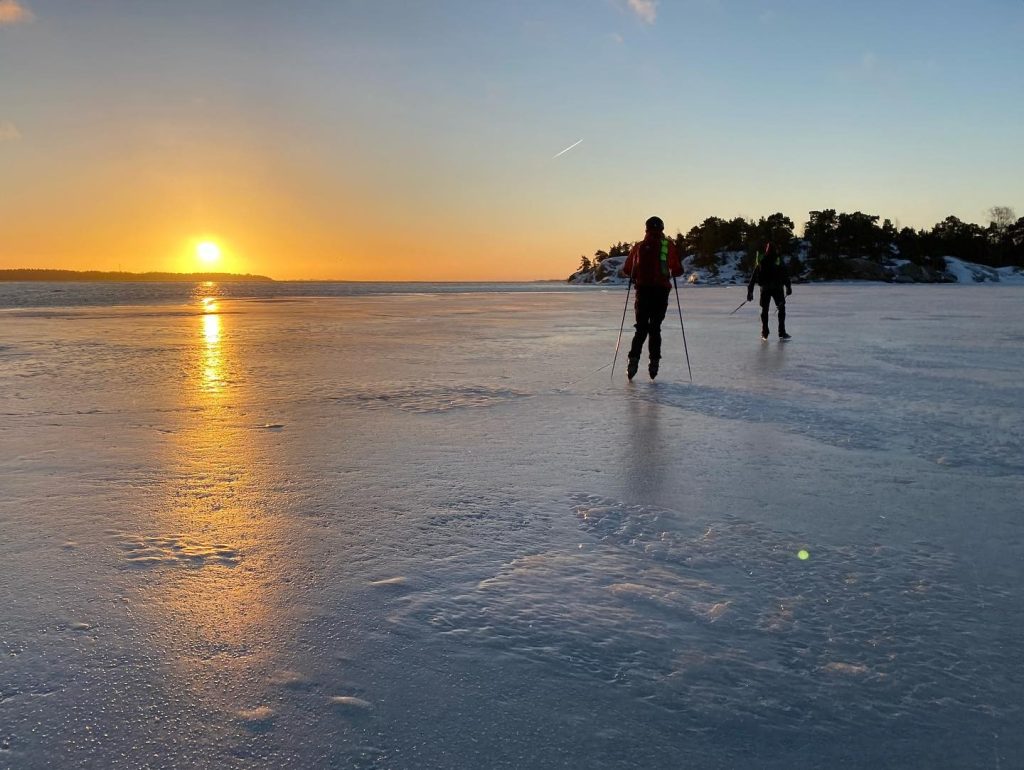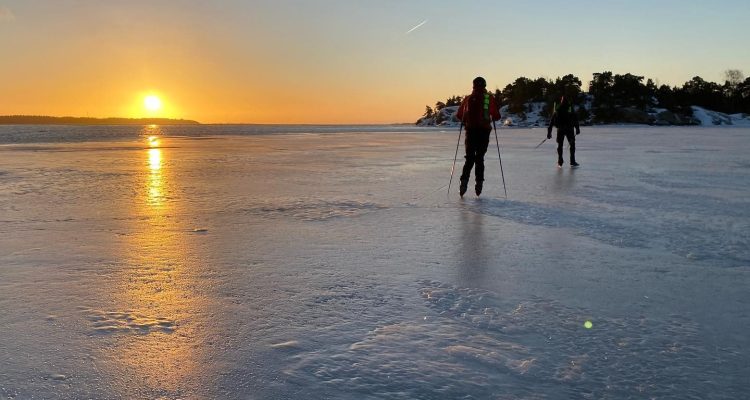Winter arrived early in many parts of Finland in 2023. Most lakes have started to freeze, with ice thickness ranging from zero on the Southern coast to up to 35 cm in Northern Finland (source: environment.fi on 17.12.2023). However, moving on ice is never without risks. According to the Finnish Swimming Teaching and Lifesaving Federation, 10-30 people lose their lives annually in Finland due to falling through ice.

A minimum of 5 cm of clear ice is generally considered safe for walking, while thicker ice is needed for group activities like ice skating. Nevertheless, ice conditions can change rapidly on the same lake, river, or sea. Narrow straits, streams, and heavy snow on the ice can create weak spots. Spring sunshine and warmer weather can alter the ice’s consistency, even weakening thicker ice covers.
Tips from a tour skater
We interviewed Chris Winquist, an experienced tour skater, for valuable tips on moving safely on ice. Chris emphasizes that ice conditions are dynamic and constantly changing.
– If you are interested in tour skating and want to do it safely, the best approach is to become a member of Suomen Retkiluistelijat or Finland’s Tour Skaters. They offer rookie courses and organize tours led by experienced skaters. Prepared tracks, with constantly monitored conditions, are one option, Chris suggests.

Find more information about courses, tours, ice safety, prepared tracks, and more on the skrinnari.fi website. For courses and tours in English in the Helsinki region, check out the Nordic Skating Helsinki website.
Moving on ice requires heightened awareness and precautions
Chris suggests several measures for safe tour skating and moving on ice:
- Ice spikes are a must and can help you get back on the ice if you happen to fall through.
- An ice pole can be used to measure ice strength, capable of breaking through 5 cm of ice with one hit, assisting in estimating skateable areas.
- Carrying a waterproof backpack with dry clothes is crucial to prevent hypothermia, which can set in quickly.
- In the event of falling through the ice, try to remain calm and head back to where you came from. Usually, the ice is strong enough for you to attempt crossing again.
- It is also advisable to always have company with you. Remember to maintain some distance between each other.
- A rescue line can be used to help someone out of the water.
By prioritizing safety and taking necessary precautions, you can enjoy the beauty of icy landscapes while minimizing the risks associated with moving on ice.

Related posts
Ice-fishing in Finland
Out in the Nature Quiz – The definitive ice quiz
Skiing, culture and beauty at Pielinen
Cross-country skiing for beginners in Turku region

